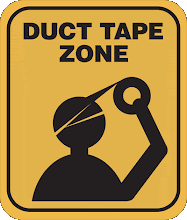OK, I've got a few problems with that last sentence. First, it sucks if you are that one woman that had a diagnostically visible lesion that went undiscovered and untreated. I guess you are an acceptable casualty. The second assumes that only 0.05% of women (or 0.00056) in a hundred, who have a biopsy done, actually have cancer. Detection rates are tracked by imaging departments and generally are between 15-30%. That means that for every 100 women who have a biopsy performed, 15 to 30 of them come back as positive for cancer. This is used as a training tool for the radiologists to be more proficient in how they recommend for biopsy. The government's rate of 0.05% indicates to me a wildly inaccurate computer model.
Not even using the back of an envelope for scratch math, I'll run through some numbers:
- Assume 20,000 Mammograms are performed at an imaging facility
- Assume 50% of those women are getting either their baseline at 35 or their recurring Mammograms between the current guidelines of age 40 and 50.
- This gives us a figure of 10,000 affected women (lets forget the financial impact on the larger health care facility and what that means to other services that lose money, but are supported by these revenues...another blog item)
- Generally, about 95% of Mammograms are normal and do not require a "Diagnostic Workup".
- That gives us 500 women every year who are referred for diagnostic follow up. This means additional films, ultrasounds, and a likely biopsy (either fine needle aspiration or core biopsy...perhaps even a surgical biopsy).
- Lets go back to the 15 to 30% detection rate. I'll go with 25% for this unscientific evaluation.
- So, out of those 500 women, 375 will be given a clean bill of health. That leaves 125 women who will get a diagnosis of cancer.
That is 125 women in a single year, in a medium sized city in Western Michigan. The 5-year mortality rate is about 15%, give or take (age, ethnicity, etc.). This means that 19 women will die of this disease.
Please keep in mind that this is under the current, EARLY DETECTION model/guidelines. Those 19 women will die even if the cancer is caught early (younger women tend to have more aggressive breast cancers).
In this new model, women between the ages of 35 and 50 will no longer have routine Mammograms. Nor will Clinical Breast Exams be covered or taught (must not overly worry yourself there, dear) since this same government panel felt that they were useless (absolutely false). Now, there are many different types of breast cancers, but some tumors will double in size every 100 days from the time the first cell goes rogue. If you are 40, and cancer just begins, it will likely get caught in your 41 year Mammogram (40 year Mammogram if your area offers digital mammography and breast MRI). In the new system, that cancer will go absolutely undetected until it becomes clinically visible. By that time, mortality in a single year (not 5 years) is around 95%.
So lets just say that every year, in my community, 125 women are diagnosed with cancer in the age group 35-50. Unless you are 49 years old when your cancer becomes diagnostically visible, you will likely die of that disease.
Under our current guidelines, approximately 19 women will die, unless more money is spent on new equipment and procedures (to catch the cancer earlier). Under the new guidelines, roughly 124 women will die every year from this disease.
Current spending from the government on women's care is about $5 Billion. Fraud and waste in current government programs tops $96 Billion. The President QUADRUPLED the nation debt in NINE months (over $1.64 Trillion!!).
The government says it is doing this to save money. Perhaps there are other places they could save that money while not sending tens of thousands of women to an early grave. How many of those women will be our wives, daughters or sisters?
--Zavost


No comments:
Post a Comment